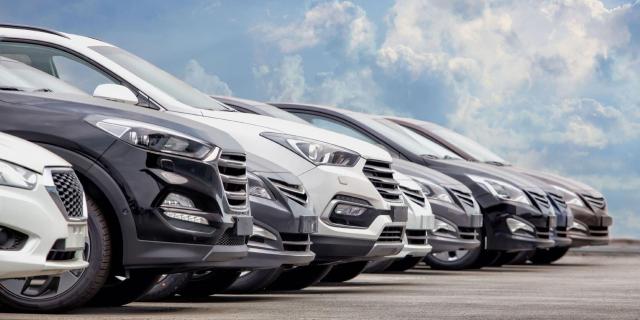Het huidige landschap van automerken wordt door elkaar geschud door de wereldwijde verschuiving naar elektrische voertuigen.
Versneld door veranderende verwachtingen van klanten, een honger naar nieuwe technologie en een vereenvoudigd productieproces, zijn de kansen voor nieuwe elektrische automerken enorm. Nieuwe spelers, vooral uit Azië, zijn in opkomst.
Dit artikel geeft een beknopt overzicht van de huidige marktsituatie en zet de nieuwkomers op de EV-markt in de kijker.
Lees hieronder verder (enkel in het Engels).
New EV Brands Emerging
The established landscape of car brands is being shaken up by the global shift from internal combustion engines to electric and hybrid vehicles.
Changed consumer attitudes, and wholly disrupted production processes are enabling new car brands to emerge, especially from China and the US.
It’s a familiar story.
When horses yielded to internal combustion engine vehicles a century ago, hundreds of new brands and companies attempted to seize the opportunity of dominating a new market.
After twenty years, a pandemic, and market consolidation, only a few car companies remained.
As internal-combustion now yields to electrification, history may be repeating itself now.
Electrification has lowered the barriers to entry for automotive production. No engines, gearboxes, and complicated exhaust systems are required. Producing an EV requires fewer parts and is simpler than manufacturing an ICE-based vehicle.
EVs are also engineered around third-party supplies, such as batteries, and can be built around a so-called skateboard – a standardised architecture.
This means that distinctly different vehicles can be built around common platforms and parts. New brands can be built using standardised equipment and supplies. As a result, dozens of new brands have emerged.
But who will succeed?
Tesla, a clear EV leader and already the world’s largest manufacturer of battery-electric vehicles, outsold European luxury brands within its key segments. Many traditional brands suffered from semiconductor shortages, giving Tesla an even greater advantage.
China’s largest EV manufacturer, BYD, builds cars, trucks, and even buses. It intends to use the same general battery architecture across all vehicle types. They also supply batteries to other EV manufacturers, such as FAW Group.
Another new entrant, China’s Nio, is already among the top five most valuable car companies, and is now beginning its European expansion, with a key focus on the largest EV markets.
After successfully launching in Norway, it will bring its electric sedans, coupés, and SUVs to Sweden, Germany and three other European markets in 2022.
Interestingly, Nio has gone beyond developing a new vehicle range, by creating a new business model: battery as a service.
SAIC, China’s largest traditional automaker, has partnerships with both Volkswagen and with GM to develop and produce EVs for the Chinese market.
The scale and knowledge gained in developing these vehicles is spilling over to Europe – such as through Volkswagen’s ID.3.
Zhejiang Geely Holding Group, owner of Volvo and Lotus, has launched a series of electric-only brands, including Polestar, Zeekr, and the LEVC (London Electric Vehicle Company).
It is also the co-owner of the Smart brand, with Mercedes-Benz. * Polestar, in particular, has been successful among fleet managers in Europe, as it still relies on Volvo’s servicing network.
WM Motors, a Shanghai-based EV company, has clear ambitions for EV supremacy. It aims to not just sell its vehicles internationally, but build its vehicles – branded Weltmeister – in China, Germany, and the US.
But the new brands aren’t all just coming from China.
Backed by Amazon and Ford, Rivian is aiming to be another American success story, similar to Tesla, but for electric trucks and vans.
With innovative solutions, such as removable spare batteries, the trucks will likely become very appealing to commercial buyers. Rivian aims to launch in Europe in late 2022.
Finally, Vinfast, part of VinGroup, Vietnam’s largest employer, has ambitious plans for Europe, including a manufacturing plant for Germany – due for completion in 2025. It presented five new models at the CES In January 2022.
Like most other EVs, Vinfast vehicles are highly connected, and offer a full slate of safety and comfort features.
And even though Tesla, VinFast, Nio, Rivian and others will produce vehicles in Europe, the electric vehicle industry may just lead to a disintegration of traditional supply- and value chains.
Battery manufacturers, such as BYD, are building cars, and car manufacturers are building battery capacity.
And of course, incumbent brands are quickly transforming their own engineering and production capacities.
Managing the production value-chain – as they have done in the past – may no longer be necessary, as contract manufacturers, such as Hon Hai precision Industries, are able to produce EVs to spec.
Incumbent brands have lost a key competitive advantage, as now even consumer brands, such as Huawei, Sony, and Samsung, can enter the automotive market.
40% of Chinese car buyers intend to buy a hybrid or fully electric vehicle next, according to a Deloitte Automotive Consumer study.
Just as diesel incentives previously fuelled the rise of diesel-engined vehicles, incentives have driven sales of EVs in China.
Over half of European countries offer such incentives, and these have been very successful in motivating a shift to zero emissions cars, especially in Norway, the Netherlands, and the United Kingdom.
But incentives are not the only reason to buy an EV anymore. Indeed, over 10% of Belgians, and 16% of Danes chose an EV in 2021, even without incentives. Key reasons are a higher climate awareness, and a desire to try something new.
Consumers are looking for digital-native, fully connected electric vehicles, often with little regard for the incumbent brands. They may also be seeking a new buying experience.
In fact, only half of German car buyers are expecting to buy their next car from a dealership.
This change in perception is a great enabler for new brands. Consumers are used to buying even high-value goods online now – even more so after the pandemic. VinFast, Nio, Xpeng and others will emulate Tesla’s direct-to-consumer model when they launch.
Leasing companies have a key role to play in supporting consumers and companies in their transition to electric brands.
In a world where regulations change quickly, brands come and go, and distribution networks are being reorganised, leasing companies can offer a pillar of safety – absorbing the risk of residual values, absorbing the resale risk for the customer.
Consumers have shown their openness to new brands, and new sales approaches when abandoning the world of internal-combustion engines. Now, it’s up to these new brands to continue delivering on their customer promises.
Wilt u meer nieuws lezen van Arval Mobility Observatory?



